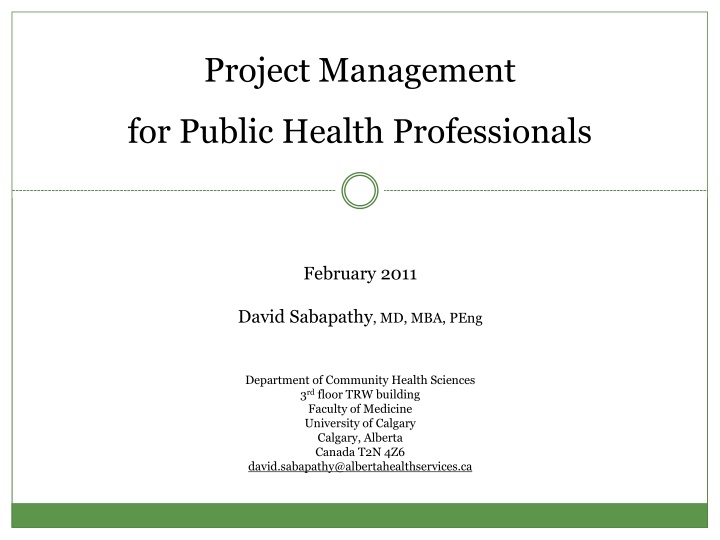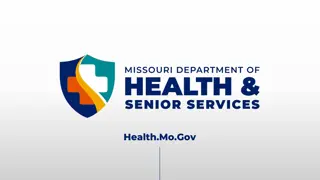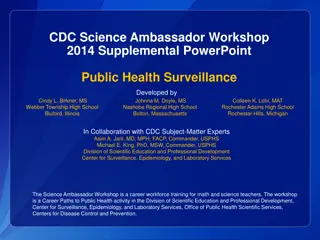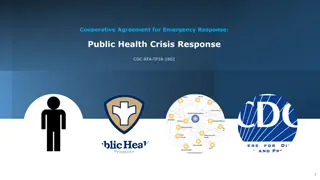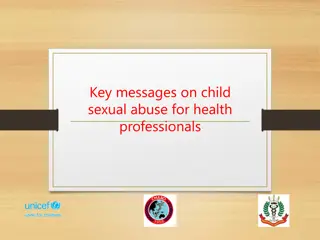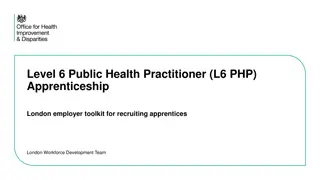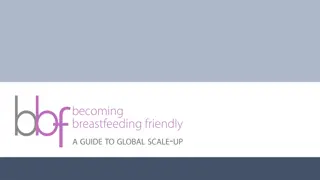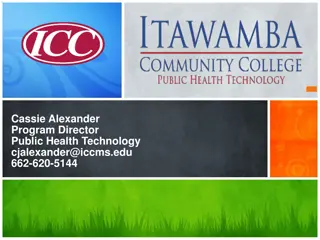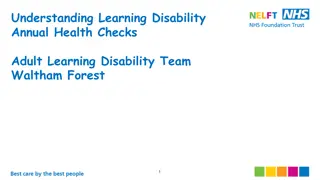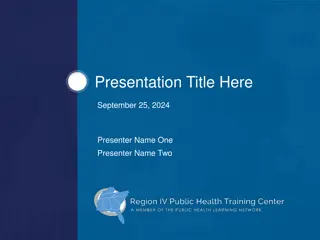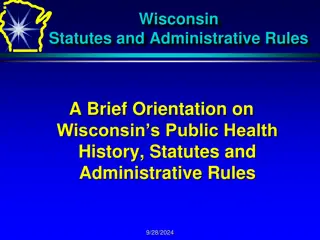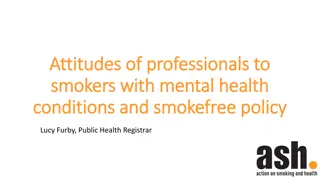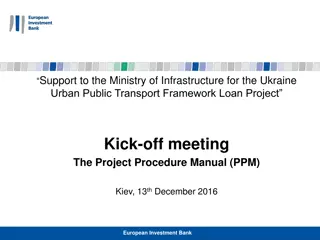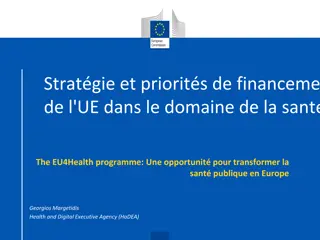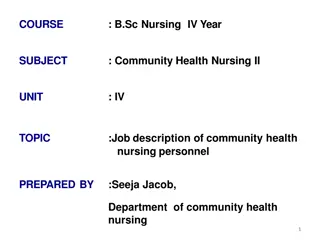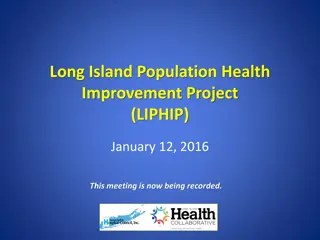Project Management for Public Health Professionals
This resource provides practical skills to develop a Project Management Plan for effectively achieving health objectives. Covering project execution, close-out, and stages of the project life cycle, it offers valuable insights and guidance. Topics include execution principles, evaluation frameworks, and in-class case study activities. Ideal for public health professionals seeking to enhance their project management capabilities.
Download Presentation

Please find below an Image/Link to download the presentation.
The content on the website is provided AS IS for your information and personal use only. It may not be sold, licensed, or shared on other websites without obtaining consent from the author.If you encounter any issues during the download, it is possible that the publisher has removed the file from their server.
You are allowed to download the files provided on this website for personal or commercial use, subject to the condition that they are used lawfully. All files are the property of their respective owners.
The content on the website is provided AS IS for your information and personal use only. It may not be sold, licensed, or shared on other websites without obtaining consent from the author.
E N D
Presentation Transcript
Project Management for Public Health Professionals February 2011 David Sabapathy, MD, MBA, PEng Department of Community Health Sciences 3rd floor TRW building Faculty of Medicine University of Calgary Calgary, Alberta Canada T2N 4Z6 david.sabapathy@albertahealthservices.ca
Section 4 Project Execution and Close-Out
Learning Objective Acquire practical skills to develop a Project Management Plan to effectively and efficiently achieve a health objective Initiation Definition Planning Execution Close-Out
Course Map Initiation Definition Planning Execution Close-out 1. Idea 2. Authority 3. Project Charter 4. Design 5. Schedule 6. Resource Plan 7. Project Outcomes 8. Evaluatio n Project Management Plan Initiation Definition Planning Execution Close-Out
Project Execution and Close-out Outside the scope of this course Good references provided at the end of this section If you ve gotten this far you re headed for success Execution Implementation, monitoring and control of the project plan Close-out Evaluation of project challenges and successes Initiation Definition Planning Execution Close-Out
Specific Learning Objectives 1. Understand the project life cycle stages of Project Execution and Close-out Initiation Definition Planning Execution Close-Out
Topics Project Life Cycle: Stages 4,5 Project Execution and Close-out Execution principles Evaluation framework Initiation Definition Planning Execution Close-Out
Learning Method In-Class Case Study Activity Modules x 3 Project Management Plan Initiation Definition Planning Execution Close-Out
Execution Initiation Definition Planning Execution Close-Out
Project Execution Time to put the Project Management Plan into action! Role of Project Manager: Communicate with Stakeholders Outcomes Measure Progress Time Resources Corrective Action Assess Risk Initiation Definition Planning Execution Close-Out
Organizational Risk vs. Project Risk What if it doesn t work? Project management = Risk management Two types of risk Organizational risk - The world outside the project Project risk - Everything we have been trying to manage Can have a successful project that fails! Initiation Definition Planning Execution Close-Out
Project Management = Risk Management Project Management is actually a process of Risk Management with respect to the Triple Constraint Initiation Definition Planning Execution Close-Out
Five Rules for a Successful Project Stakeholder agreement on goals of project Effective communication among stakeholders Management support Plan with clear schedule and responsibilities Controlled scope Initiation Definition Planning Execution Close-Out
A Project is Deemed Successful If Accepted by Stakeholders (Expectations) Outcomes Achieved Within Resources On Time Initiation Definition Planning Execution Close-Out
Close-out Initiation Definition Planning Execution Close-Out
Evaluation Why? Many reasons to review the project Confidence in project management approach Celebrate successes Learn from challenges Closure and sense of completion Document for auditing and future reference Team building Project team Stakeholder Initiation Definition Planning Execution Close-Out
Evaluation Project evaluation has four steps Assessment of Project Management Acceptance of Deliverables Evaluation of Original Concept Review of Stakeholder Relationships Initiation Definition Planning Execution Close-Out
End of Section 4 Project Execution and Close-out
Triple Constraint Scope Time Team Resources
News from Project Sponsor Announcement for each project team Describe in your presentation how you will compensate
Learning Objective Acquire practical skills to develop a Project Management Plan to effectively and efficiently achieve a health objective
Key Lessons Intro to Project Management 1. Innovation is important in Public Health 2. Innovationstarts with an Idea 3. Project Management achieves that Idea A project is a time-limited method to complete a series of activities leading to a specific outcome given a fixed timescale and resources Two unique characteristics of projects: 1. Defined start and end (i.e. temporary, one-time) 2. Creates a unique product or service
Key Lessons Intro to Project Management The Project Life Cycle is a process for managing projects from Idea to Outcome The Project Management Plan is a final product of the Initiation, Definition and Planning stages and is used as a roadmap for Project Execution
Key Lessons Project Definition The project charter serves two purposes: 1. Organizes our thoughts (e.g. project overview) 2. Formal approval from Sponsor to begin In the Project Charter don t over-commit to project deliverables. Project Deliverables will be defined later during the Project Design. Projects must protect against Scope Creep . All scope changes must be carefully evaluated and approved by all Project Stakeholders in accordance with the Triple Constraint.
Key Lessons Project Definition One of the most common reasons for Public Health projects to fail is poor attention to the Project Design The Preliminary Design produces a list of the Project Deliverables If the project s time and resources cannot be reasonably apportioned across the WBS, repeat the Preliminary Design and develop a newlist of Project Deliverables
Key Lessons Project Planning Work Packages are the only tasks in the project that will be completed (not summary tasks). Only sequence Work Packages and do not let Resource Constraints affect sequencing. Work Packages are the only tasks in the project that will be completed (not summary tasks). Only sequence Work Packages and do not let Resource Constraints affect sequencing. Two elements are required to create a Gantt Chart: Work Package Sequence & Work Package Duration
Key Lessons Project Planning The Critical Path is the sequence of tasks that must be completed on schedule if the project is to be on schedule. Any delay in a task along the Critical Path will result in a project delay. Attention must always be paid to the Critical Path. A Human Resource Plan is a useful communication tool that identifies when people are scheduled to work on a project task. Project estimation (scope, time, resources) improves as the project life cycle unfolds. Improved estimation requires additional cost.
Key Lessons Evaluation & Close-Out Project Management is actually a process of Risk Management with respect to the Triple Constraint
End of Course David Sabapathy, MD, MBA, PEng Department of Community Health Sciences 3rd floor TRW building Faculty of Medicine University of Calgary Calgary, Alberta Canada T2N 4Z6 david.sabapathy@albertahealthservices.ca
References Campbell, C.A. The One-Page Project Manager: Communicate and Manage Any Project with a Single Sheet of Paper , John Wiley & Sons, Inc., 2007. 1. Dwyer, J., Stanton, P., Thiessen, V. Project Management in Health and Community Services: Getting good ideas to work , Routledge, 2004. 2. Kyle, M. Making it Happen: A Non-Technical Guide to Project Management , John Wiley & Sons Canada, Ltd., 1998. 3. Schwalbe, K. Introduction to Project Management , Thomson - Course Technology, 2006. 4. Verzuh, E. The Fast Forward MBA in Project Management , 3rd Edition, John Wiley & Sons, Inc., 2008. 5. Project Management Breakthroughs , Learning Guide, Priority Management International, 2003. 6.
Project Management for Public Health Professionals February 2011 David Sabapathy, MD, MBA, PEng Department of Community Health Sciences 3rd floor TRW building Faculty of Medicine University of Calgary Calgary, Alberta Canada T2N 4Z6 david.sabapathy@albertahealthservices.ca
